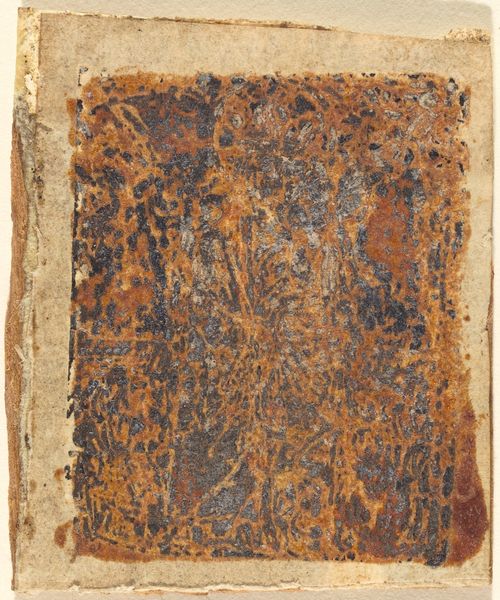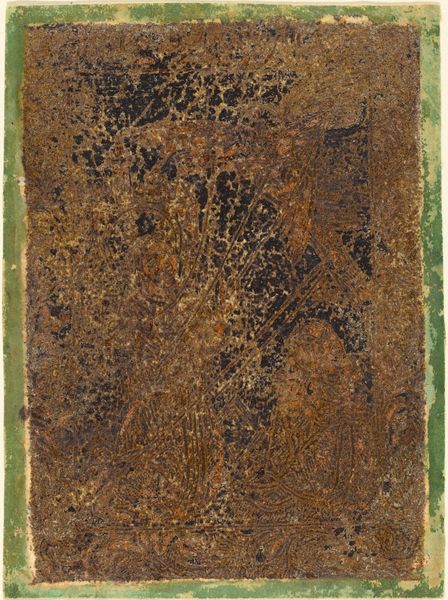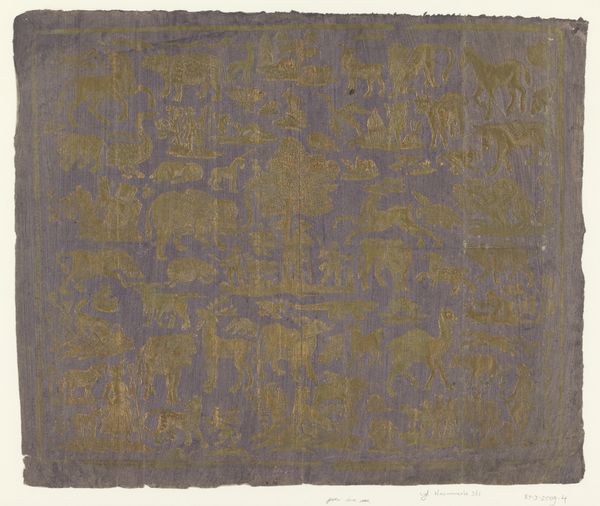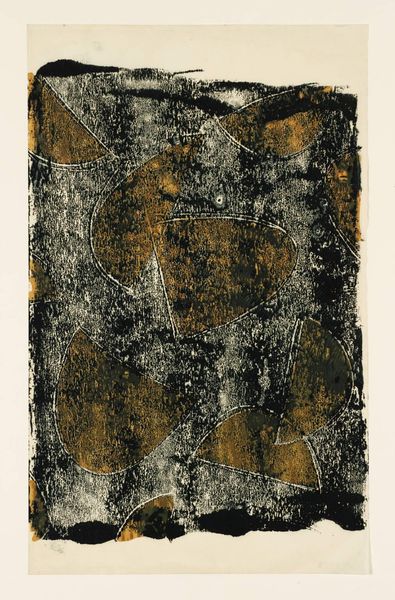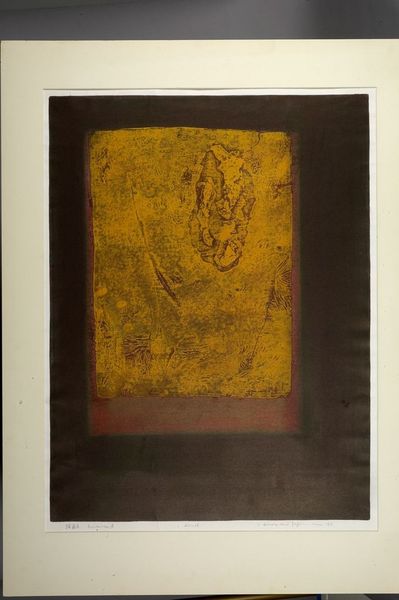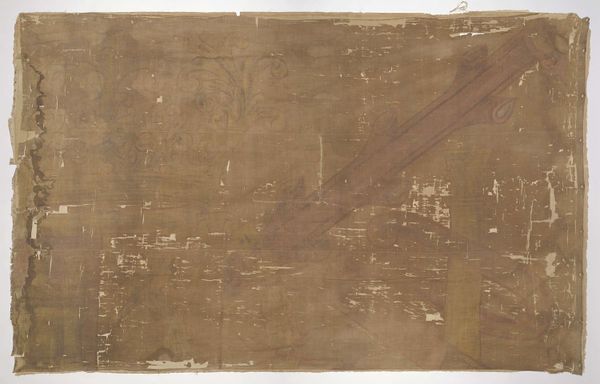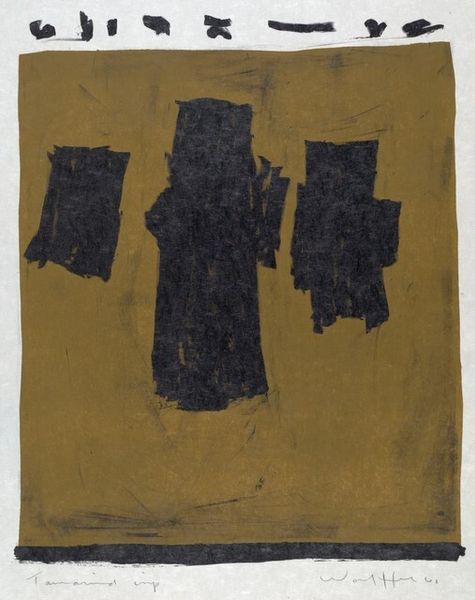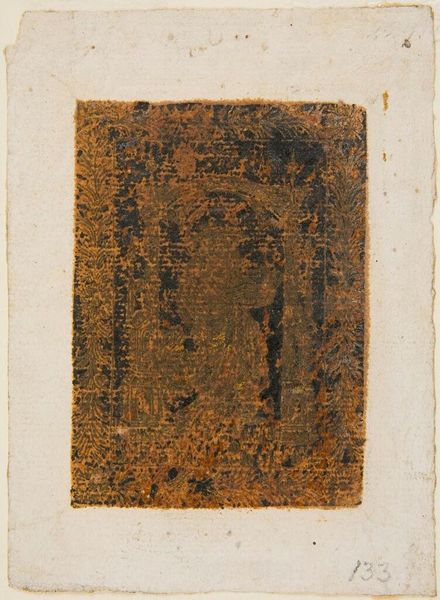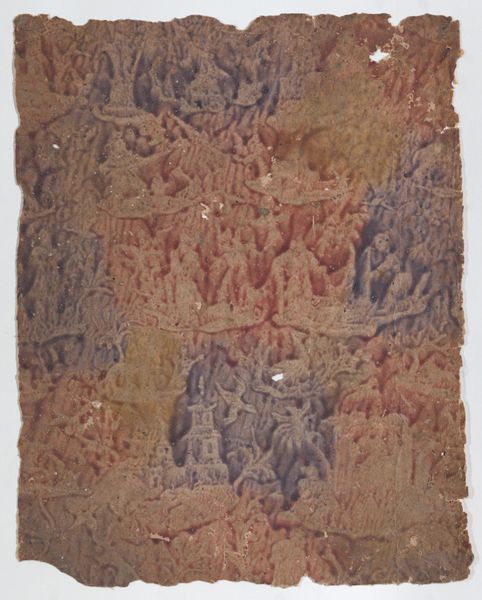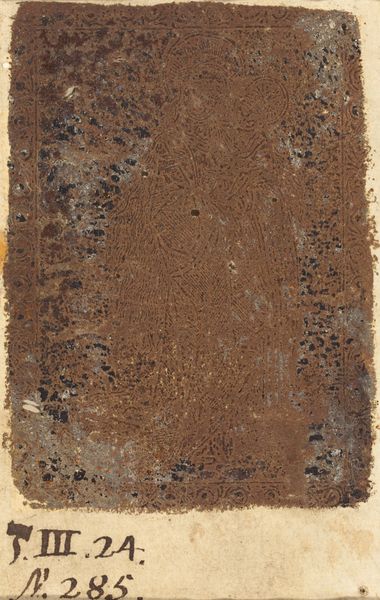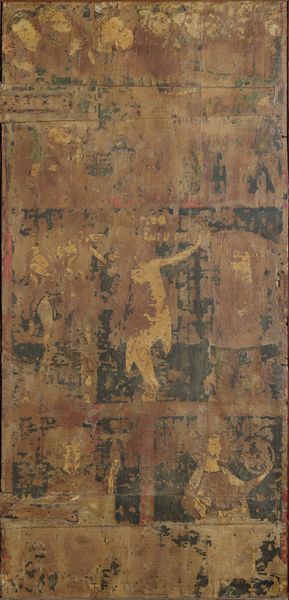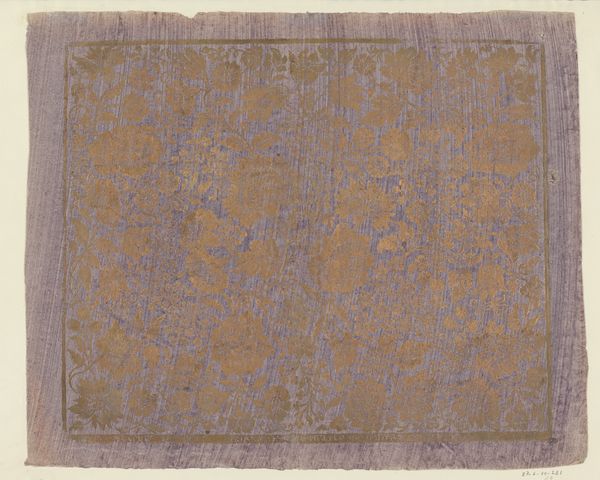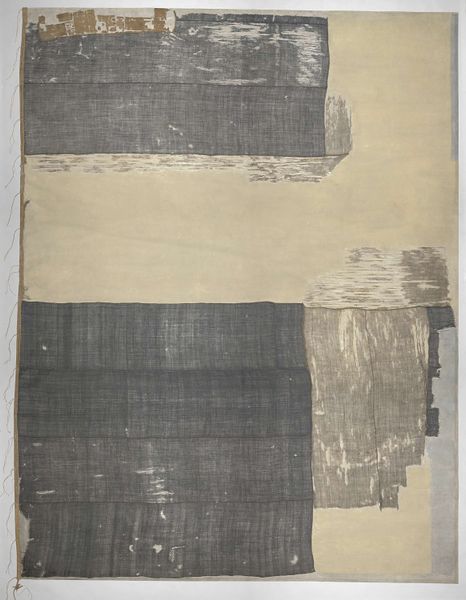
painting, paper, ink
#
abstract-expressionism
#
abstract expressionism
#
painting
#
paper
#
ink
#
abstraction
#
watercolor
Copyright: Hiroyuki Tajima,Fair Use
Editor: So, this is Hiroyuki Tajima's "Tsunagagia" from 1962, made with ink and watercolor on paper. The warm, earthy tones create a fascinating layered effect; it feels like looking at some ancient map or coded document. What do you see in this piece? Curator: Well, immediately, I'm drawn to how this work, created in post-war Japan, speaks to the fracturing and reconstruction of identity. Notice how the fragmented shapes, like puzzle pieces, are loosely connected? This abstraction is typical of the artistic response to the socio-political climate. The use of ink and paper, traditional Japanese materials, contrasts with the modern style of Abstract Expressionism. Editor: That's interesting. I was just focusing on the aesthetic, but thinking about it as a response to post-war Japan makes the fragmented elements resonate much more deeply. Do you think the title gives us another clue? Curator: Absolutely. "Tsunagagia" alludes to connection, binding, and integration, hinting at the social desire for cohesion amidst the nation’s recovery. There’s an inherent tension here: broken forms striving for unity, mirroring the societal narrative of the time. It's as much about who gets included as who is excluded, which remains pertinent even now. How does this historical context shift your view of it? Editor: It really does change everything. Before, I saw a neat abstraction; now I see a society grappling with itself, translated onto paper. It really underscores how even abstract art can be deeply political. Curator: Precisely. It encourages us to consider whose stories are represented, and how museums frame such artworks to enhance—or diminish—their political impact. The piece acts as a cultural touchstone reflecting the values and anxieties of its moment and beyond. Editor: I’ll definitely look at abstract art differently going forward. It’s less about pure form and more about cultural conversation, then. Curator: Exactly. Recognizing art as enmeshed in cultural history can open richer understanding of it.
Comments
No comments
Be the first to comment and join the conversation on the ultimate creative platform.
